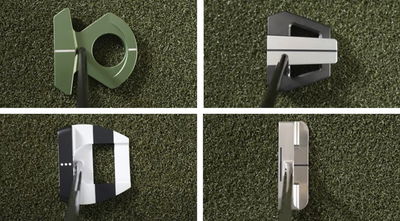Royal St George's Course review: England's premier links layout
One of the finest courses in England, Royal St George's offers a pristine links layout that's breathtaking and challenging in equal measure.
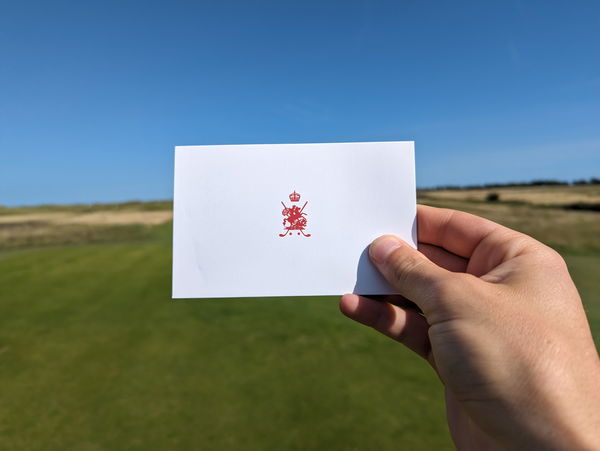
The first English course to host The Open Championship, Royal St George's has a rich history of major championship golf, having gone on to host The Open 15 times in its history, with the most recent of those coming in 2021, when Collin Morikawa lifted the famous Claret Jug.
Set on England's south coast in Kent, Royal St George's was first opened in 1887. Designed by Dr William Laidlaw Purves, the routing navigates undulating terrain, with deep bunkering and large dunes providing an abundance of obstacles to overcome.
Having not experienced the course firsthand, when a chance invite landed on our lap, we simply had to take it.
The opportunity to play any course on the Open rota is a real treat, and having recently attended The Open at Royal St George's in 2021, we knew this course would provide an excellent test with some splendid views overlooking the English Channel.
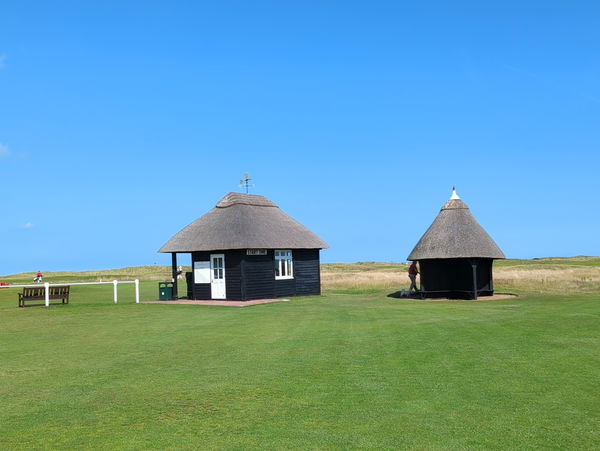
So, with the August sun shining brightly, we hopped on a train down to Sandwich to visit the hallowed turf of one of the finest courses in the world.
Before digging into the review, we want to give a special mention to Rupert, the member who was kind enough to host us for our round.
Not only did he extend the warm invite, but he was the perfect sherpa to guide us around the course, providing not only great company but also valuable advice on how best to navigate the pristine links layout.
After a light lunch in the charming clubhouse followed by a quick hit on the driving range, we were ready to take on one of the most prestigious tracks in the country.
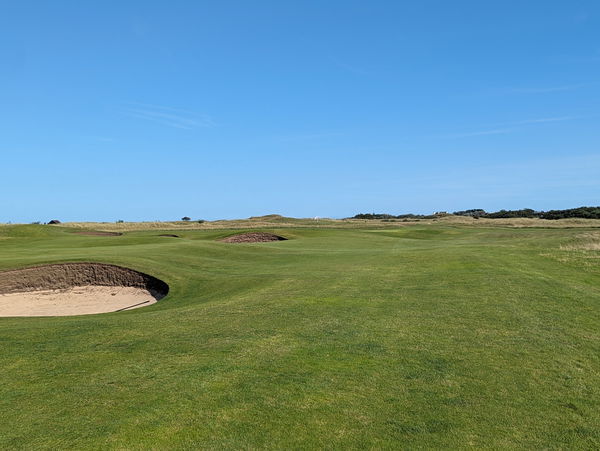
The opening hole at Royal St George's looks a little underwhelming off the tee, measuring 442 yards, the par 4 has a relatively wide open fairway, and when the rough is down, you can really let rip with the driver.
The firm and fast fairways provided plenty of run, and we managed to cling onto the first cut after a well-struck tee shot.
The real test on this hole, though, comes around the green. Three strategically placed pot bunkers provide ample protection short and left of the green, while a roll-off area short right will punish anything slightly under hit.
We were unfortunate enough to find that exact roll-off area, but thanks to the beautifully manicured fairways, we were able to utilise the Texas wedge to get up and down for an opening par.
The first green gave us a great sighter for what was to come. The razor-sharp surfaces were running fast, with anything hoping to cling on to the sides or front being ushered away by slopes of varying severity.
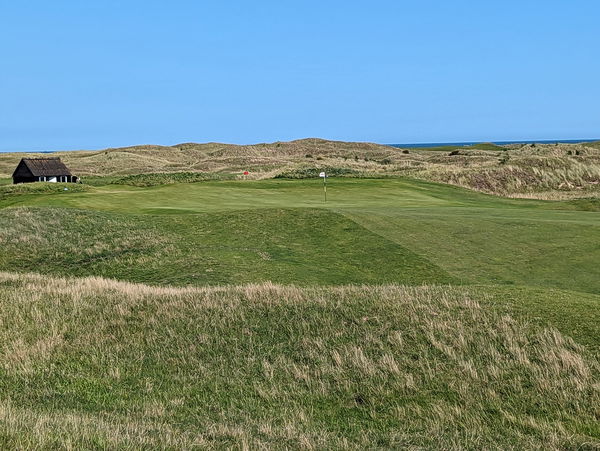
With our first tee nerves suitably settled, we headed on to the second tee with a bit of a spring in our step.
Perhaps one of our favourite holes on the front nine, the second is a sharp dog-leg left that features a large mound to the left-hand side of the fairway.
You can take an aggressive line with driver to try and shorten the hole, but the smart play is a long iron carrying the fairway bunkers, which should leave you with a short iron or wedge for your approach.
The back-to-front sloping green does offer a bit of a backstop, but in summer conditions, we wouldn't bank on it playing ball, as we saw our approach come in a little too hot and roll straight through the back.
A nice chip set up another tidy up and down, but at this point, we felt like we might be cashing in our short-game luck a little too early in the round.
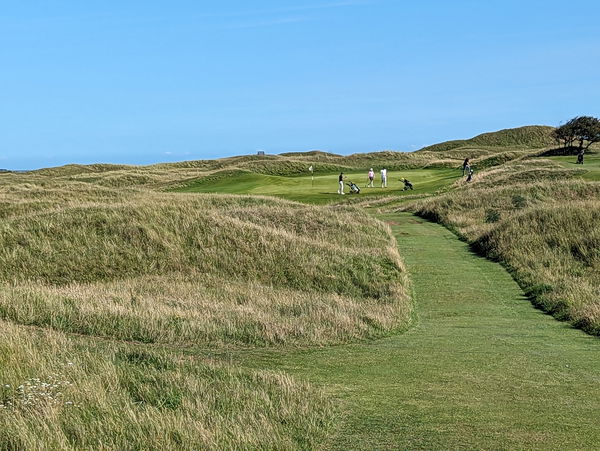
The third hole, a long par three that surprisingly features no bunkers, has one of the toughest greens on the course.
The 40-yard-long two-tier green is narrow, with enough undulation to strike fear into even the finest putters in the land.
With the pin positioned in the middle of the green, we threw caution to the wind and took dead aim. Unfortunately, our scopes could have done with further calibration as our ball sailed over the green, nestling up nicely against the rough to leave us with an almost impossible second shot.
Having been fortunate enough to cash in two early up and downs on the first two holes, our short game was sadly no match for the third green, and we walked off with a rather disappointing bogey.
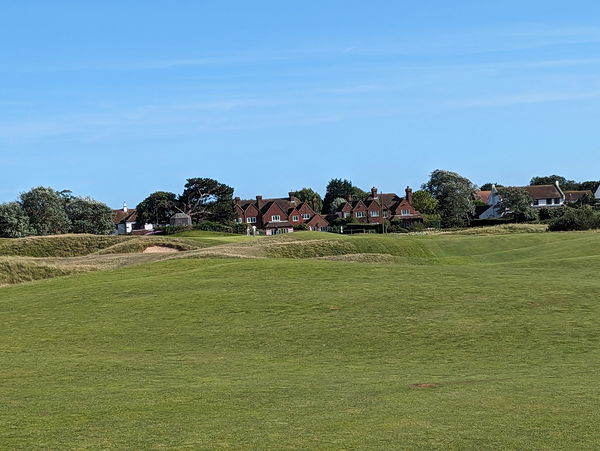
The first thing you notice standing on the fourth tee is the absolutely monumental bunker staring you dead in the eye.
What must be one of the tallest bunkers in England provides an ideal target line, which, if carried, opens up the hole beautifully.
A more measured approach can be to take the ball up the left side, but if the driver is on form, then attempting to reach the wide-open fairway that lies beyond the bunker is the choice we would recommend.
Another tricky green awaits you on the fourth. Anything long of the green risks trickling out of bounds but too conservative, and you will likely see your approach feed down into the deep gully that lies short and left of the putting surface.
The gully was where we found ourselves after two shots, and from there, the putter seemed like the smart move. Climbing a steep hill, our ball very nearly came straight back down to us as a result of fairly feeble contact, but thankfully, it appeared to defy the laws of physics and hung on to the edge like a savvy mountain goat.
Two more putts and we were walking off with another bogey. We always like to point to one specific hole on a course that we think more than anything is simply great fun to play, and we think that the fourth is undoubtedly the winner of that prize at Royal St George's.
With the mountain-like bunker and wild and wonderful green, we couldn't help but smile when we played this hole, and at the end of the day, that's really what it's all about.
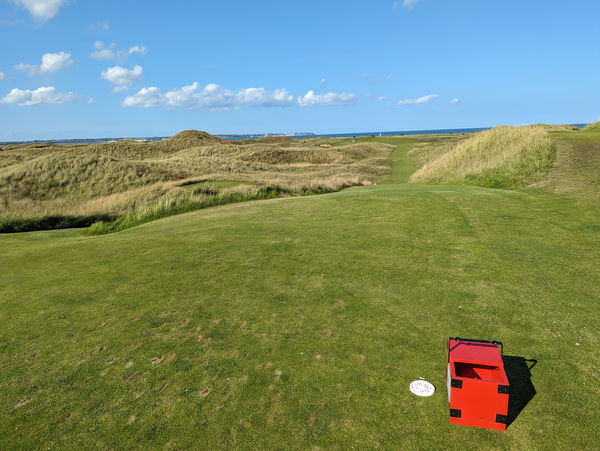
On to the fifth hole and our first sight of the English Channel. From a high tee in the dunes, the fairway winds down to the coastline, with bunkers and dunes providing ample obstacles to navigate.
Famously, the second shot on the fifth hole was the fictional character James Bond's favourite second shot in all of golf.
Depending on the tees you play, a long iron can leave you nicely in the fairway, but if the wind really starts to whip up and off the sea, then you can be faced with a different proposition entirely.
Thankfully, we were met with fairly benign conditions, and an eight iron was all that was required to attack the green.
Missing the green slightly left, we were faced with a chip back up the hill that runs up the left side of the green, and a solid putt was enough to secure par.
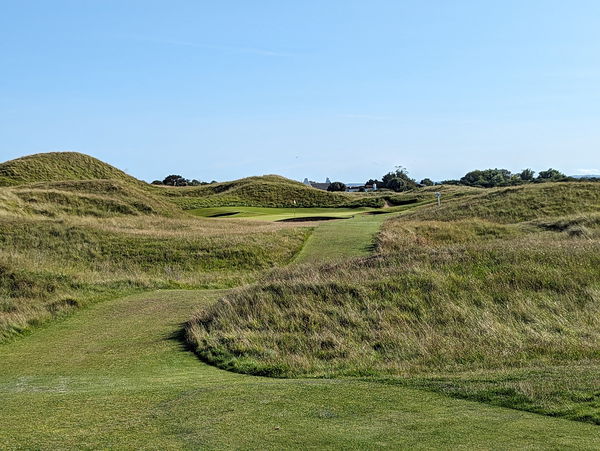
One of the most picturesque holes on the course, the par 3 sixth is framed beautifully among steep-sided dunes and deep devilish bunkers.
From the tee, the green looks deceptively small, but once you get up there, you'll see that it's actually quite deep. Accuracy is obviously paramount, but that's only half the job, as the green has plenty of subtle break thanks to two ridges that run through it.
An excellent test with the flat stick awaits those who manage to hit the green, but beware the pot bunkers that lie in wait for any wayward tee shots.

The 7th hole is the first of two par 5s on the course, and playing 575 yards, it's also the longest.
A partially blind tee shot only gives you a glimpse of the fairway, but if you can thread your driver through the three bunkers that lie in front of you, then you'll give yourself a great look at the green.
A well-struck fairway wood might be able to leave you greenside in summer conditions, but laying up with an iron is probably the most sensible approach.
Running beside the shoreline, the green is one of the flattest on the course, with two pot bunkers short and right providing the main sources of protection.
Playing away from the sea, the 8th hole features a large plateau fairway that runs down into a gully.
Bunkers line the right side of the fairway, and if found, they will undoubtedly lead to a dropped stroke. Trust us we're speaking from experience.
The narrow two-tier green sits on the opposite side of the gully and slopes back to front, with a front pin position being the most friendly for scoring.
Having managed to navigate the front nine with a respectable score intact, the 8th was where the wheels started to come a bit loose. A skied tee shot followed by a topped four iron left us in all sorts of trouble, and thanks to a bladed chip from long of the green, we sadly carded a triple bogey for our sins.
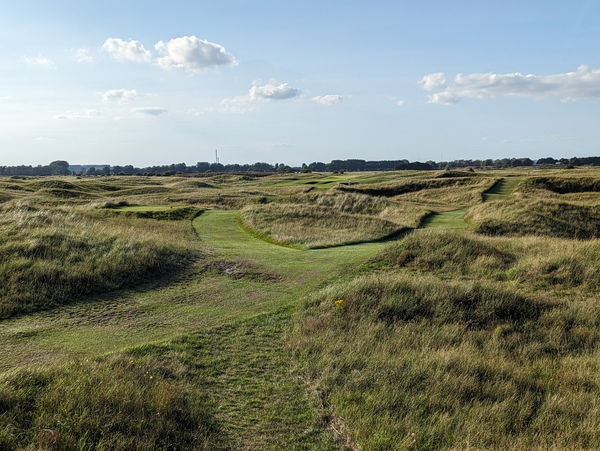
A relatively short par 4 by modern standards, the 9th hole offers one of the best birdie opportunities on the course.
A good drive that avoids the two centre-line fairway bunkers will leave you in fantastic shape to attack the pin, and if you manage to stick one close, then the true and fast greens will reward a good roll off the putter face.
Managing to tick two the first two items off that to-do list, sadly, our birdie putt came up just short, and we walked off with a par, rueing the good opportunity to repair some of the damage done on the previous hole.
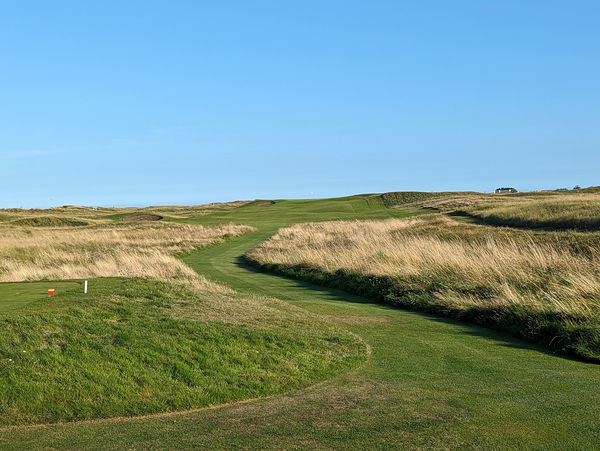
A wide-open fairway greets you on the tenth hole, but don't be fooled. The danger lies ahead.
A dome green sits above the fairway, and there is very little margin for error with your second shot. Only the purest of strikes will see you putting with your third shot, with anything long or short being punished with little to no mercy.
We always find elevated approaches difficult due to the lack of depth awareness, but this green presented a whole new challenge, with no safe havens to be found on any side. You need to be absolutely pinpoint to avoid racking up a big score.
We saw our ball cascade back towards us after a conservative approach, and from there, it was time to keep the ball on the ground and hope the putter could work its magic. Three putts later, and another shot had been dropped, but in all honesty, we were actually quite relieved it was just the one.
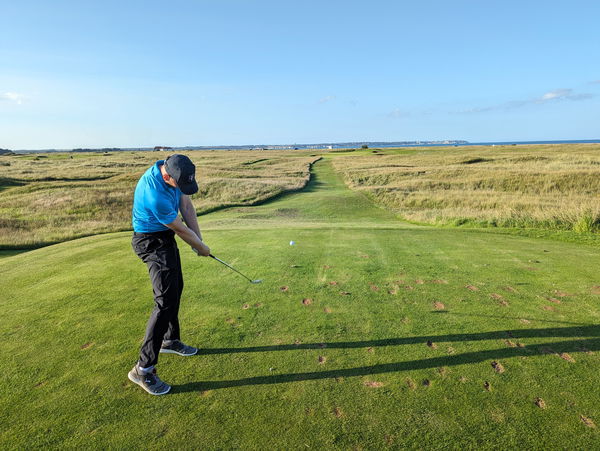
The 11th hole is a demanding par three, measuring 242 yards off the back tees. Thankfully, we decided against playing the championship tees, which meant we avoided the embarrassment of having to take the head cover off our driver, but even still, a sweetly struck long iron was needed to give us any chance at par.
With five pot bunkers surrounding the green, there is a relatively small margin for error, and even if you do manage to find the putting surface, the two-tier design will test anyone's ability with the flat stick.
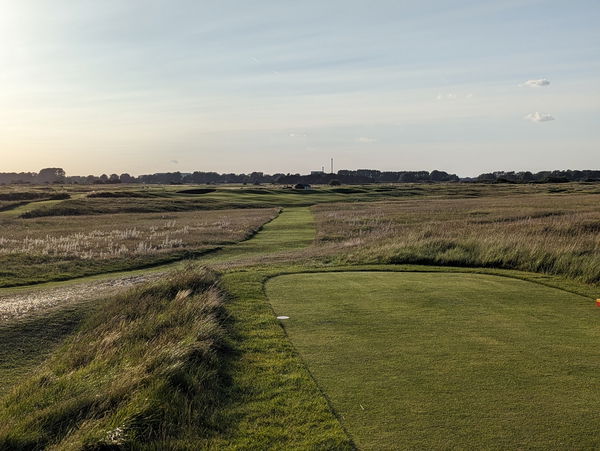
The shortest par 4 on the course, the 12th is a dogleg right, with a narrow fairway that's characterised by the long ridge that runs through the middle of it.
Big hitters can go for the green in one, but a long iron is a more tactical approach, which should guarantee a wedge in hand for your second shot.
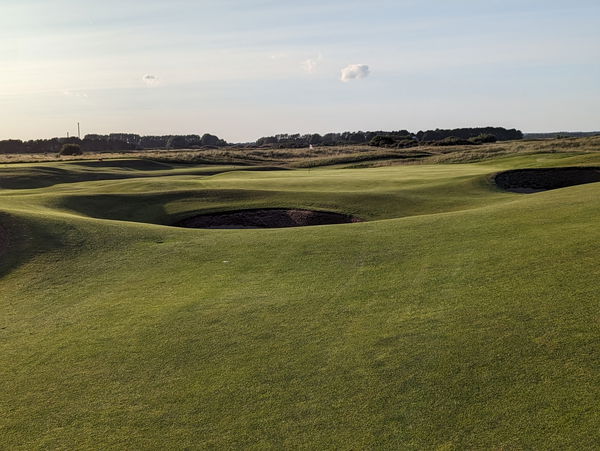
Three pot bunkers in the fairway lie in wait to gobble up any errant shots, and a further six are strategically placed to protect the small green.
Well suited to those who like to plot their way around a hole, the charming 12th requires precision and a deft touch for optimal scoring.
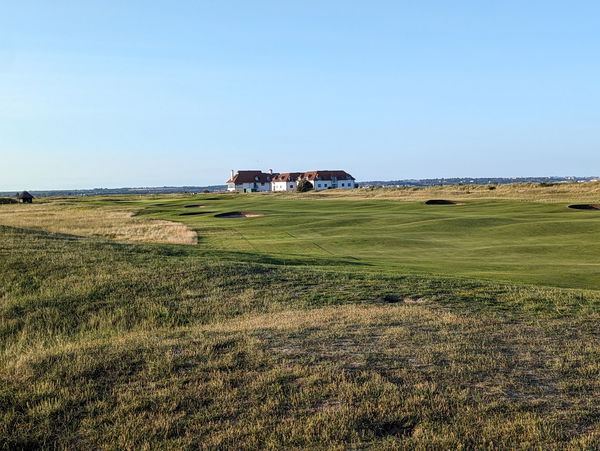
The 13th hole marks the start of the toughest section on the course, where numerous Open Championships have been won and lost.
This three-hole stretch starts with a par 4 with idyllic views of the shoreline. The fairway is pinched by two bunkers on either side, with an additional two flanking each side of the entry to the green, helping to guard par.
The narrow green is tough to hit with what will likely be a long approach shot, and if you can walk off with a par, you can hold your head high.
Don't get too far ahead of yourself, however, as there is plenty of danger lurking just around the corner.
As you may have noticed, the recounting of our round has tailed off in recent holes. While we can remember each shot vividly, the routes we were taking will offer little to no assistance for anyone hoping to gain any insight into how best to play this course.
In short, it was at about this point that our game really started to fall apart. Was it the tougher holes, or was it the fact that we couldn't hit a green in regulation? We'll let you read between the lines on this one.
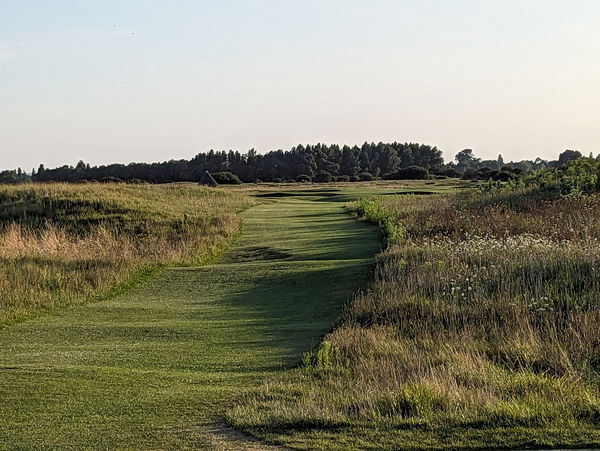
Possibly the hardest hole on the course, the 14th has out of bounds down the entire right side.
The Suez Canal ditch runs through the middle of the fairway, so approaching this hole with great caution is well advised.
The par 5 measures 545 yards, so tackling it as a three-shotter is almost inevitable for the majority of amateur golfers.
A variety of pot bunkers protect the left-hand side of the green, so leaving yourself on the right half of the fairway is the clearest route to success.
It's rare you see a shot that truly makes you stop in your tracks, but Rupert, our playing partner, managed to pull off one of the most sublime pieces of ball striking we've ever seen.
After taking a two-iron off the tee, he had 290 yards to the pin and executed one of the most ridiculous driver off-the-deck shots we've ever witnessed.
Carving itself through the air, the ball landed within three feet of the hole, leaving him with a downhill eagle putt, which he promptly knocked into the back of the cup.
The crowd went wild!
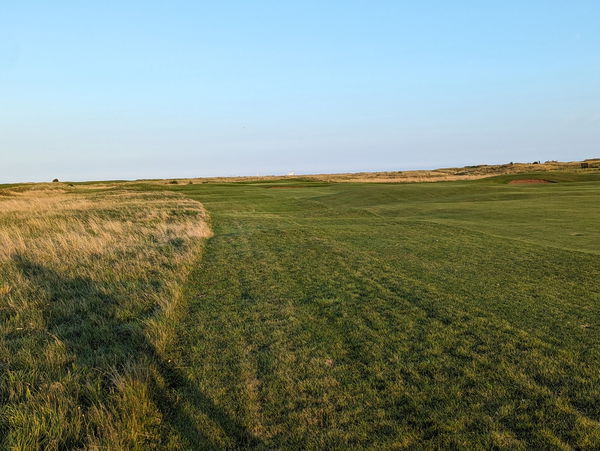
Typically playing straight into the wind, the 15th hole is a beast of a par 4.
Five bunkers line the fairway, and a steep-sided green will deny any approach shots with even a hint of fade towards the right side.
Three bunkers also form a sandy gateway to the front of the green, so running it up is a perilous exercise.
If you can walk off 15 with your scorecard still intact, you have successfully manoeuvred the hardest part of the course, but maintaining focus will be paramount in order to finish off the job on the final three holes.
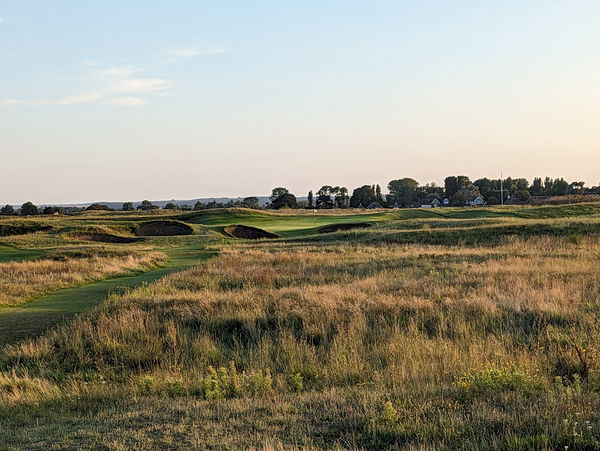
With the sun beginning to drop, the beautiful topography of the landscape started to truly reveal itself. Long shadows and golden sunlight stretched out across the course, highlighting the subtle undulation and deep-sided bunkers beautifully.
Carved into the landscape, the 16th hole is the shortest hole on the course but by no means the easiest. Seven pot bunkers surround the generous green, with slopes on all sides ushering any wayward tee shots away from the pin.
Thomas Bjorn famously came to blows with this hole in 2003, when he led The Open by three shots stood on the 16th tee, only to see his chances of victory slip through his fingers when he took three shots to escape from the right-hand greenside bunker.
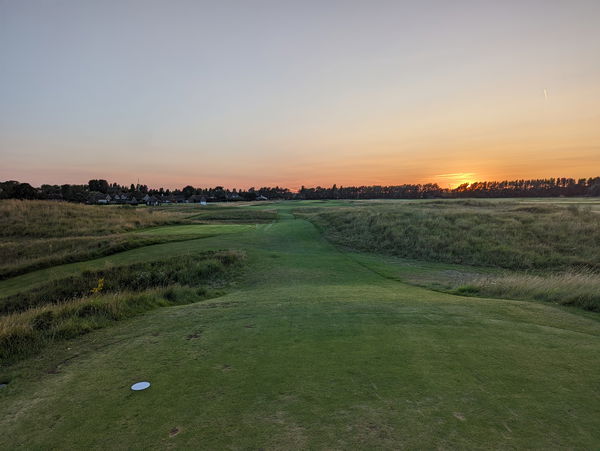
Featuring a fairway with sparse patches of level turf and a green with a steep false front, the 17th requires clean ball striking in order to be overcome.
A booming drive will set you up nicely to attack the pin with a short iron, but with a variety of humps and slopes running throughout the fairway, you will likely be hitting from uneven ground.
Courage is required for your second shot, as the steep, false-fronted green will gladly reject anything short of the target.
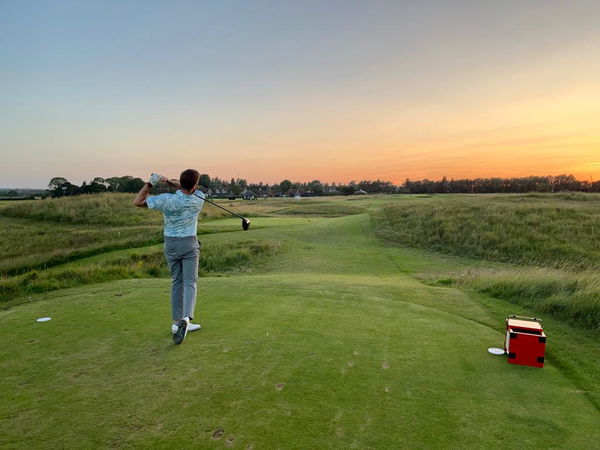
With the sun setting to our right, the 18th hole looked absolutely stunning.
Littered with hazards, the long, treacherous hole evokes admiration and fear in equal measure.
With a long tee and second shot required to get safely aboard the green, the final hole will test you right to the end.
Two greenside bunkers stand like bouncers guarding the entry to the green, and a sharp fall-off on the left side of the slick surface provides one final obstacle to overcome in order to close out your round.
The testing 18th is an excellent finale to a sublime course that will have you wanting to return at the next possible opportunity.
Verdict
Such is the excellence of this course we almost found ourselves running out of adjectives to describe it. The natural beauty, stunning setting, and challenging design make it without a doubt one of the premier links courses in the world and a must-play for any golf enthusiast.
The creative routing provides a wonderful variety of backdrops, and when combined with the sensational conditioning, this course sits deservedly in the pantheon of great Open venues.
You may think you know Royal St George's having seen it on TV, but trust us, there is so much more to this historic course than meets the eye.
No golfing bucket list would be complete without a visit, so be sure to get yourself down to Kent's South Coast for a day that will live long in the memory.





